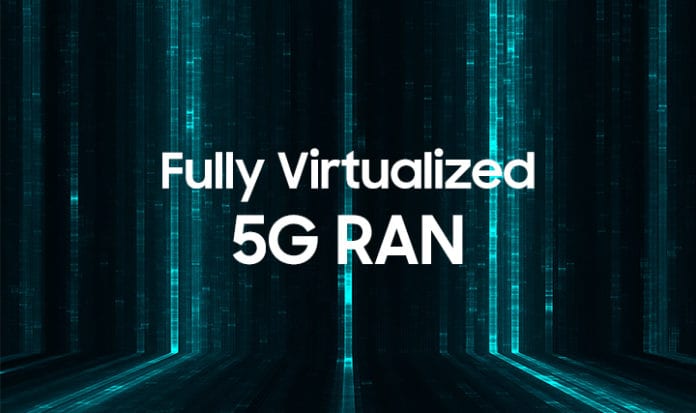A Virtualized Radio Access Network (vRAN) is an agile approach to RAN deployment and management that offers carriers the promise of improved operational efficiency and better flexibility to meet the myriad demands of 5G enterprise customers. vRAN and OpenRAN are often discussed in the same breath, as OpenRAN extends the principles and objectives of vRAN design.
vRAN is a path to disaggregation
Carriers must constantly increase capacity, provide new services and improve operational efficiency. The 5G Core Network provides an agile framework for that: its Service-Based Architecture (SBA).
The 5G Core Network SBA is cloud-native, in the sense that it works in principle similarly to a cloud service running in a data center. Core network functions are containers of microservices which talk through open interfaces. 5G baseband communications are divided between the Central Unit (CU) and Distributed Unit (DU), operating on the network as containerized functions.
Nokia’s Tommi Uitto explains, “VRAN means that the Baseband functions, such as L1, L2, L3 and transport processing, or at least some of them, are run by General Purpose Processors (GPP, such as x86 processors), on top of virtually (pun intended) any commercial off-the-shelf (COTS) computing platform. Until now, baseband has been run in purpose-built hardware (HW) using either ASIC (Application Specific Integrated Circuit) or CSSP (Custom Specific Standard Product) type of System-on-Chips (SoC).”
By fully virtualizing network functions, carriers can migrate from custom-built Baseband Units (BBUs) to standard software servers running on commodity server hardware. Remote Radio Units (RRUs) network with Virtualized Baseband Units (vBBUs) in the cloud.
vRAN pros and cons
vRAN solves an essential dilemma for operators: dependency on proprietary hardware vendors for baseband operations. Virtualizing the RAN increases flexibility in hardware, software and systems integration, and adopts the same agile principles that drive innovation in cloud services.
According to Cisco, “Closed interfaces and monolithic hardware-based solutions limit progress and the ability to diversify [the carrier’s] supply chain. This is a substantial challenge that must be resolved, especially since an estimated 70% of network CAPEX and OPEX are associated with building and managing the RAN.”
vRAN solutions promise improved network resiliency and utilization, simplified network routing and a better optimized network topology for the varying 5G demands of enterprise customers.
Critics suggest that disaggregating baseband communications can create operational complexity, security risk, and vendor support.
vRAN deployment can be simplified in greenfield 5G networks, as the 5G Core is built with Network Function Virtualization (NFV) in mind. But the vast majority of carriers operate brownfield networks, with capacity, performance and scalability limited by the dependencies on LTE Evolved Packet Core technology.
vRAN in the news
Wind River is using Intel’s Flex RAN reference software to develop vRAN for its own Wind River Studio edge computing platform. The project’s goal is to fast-track vRAN deployments with pre-integrated “review evaluation packages.”
Mavenir and Deutsche Telekom have deployed Open vRAN in the German city of Neubrandenburg. It’s a multi-vendor open RAN network that delivers 4G and 5G services across as many as 25 sites.
Ericsson Open Lab has opened in the Canadian city of Ottawa. Technology partners include Intel, NVIDIA, Red Hat and Wind River. Its goal is to further the development of architectures and common operating standards for OpenRAN initiatives.

